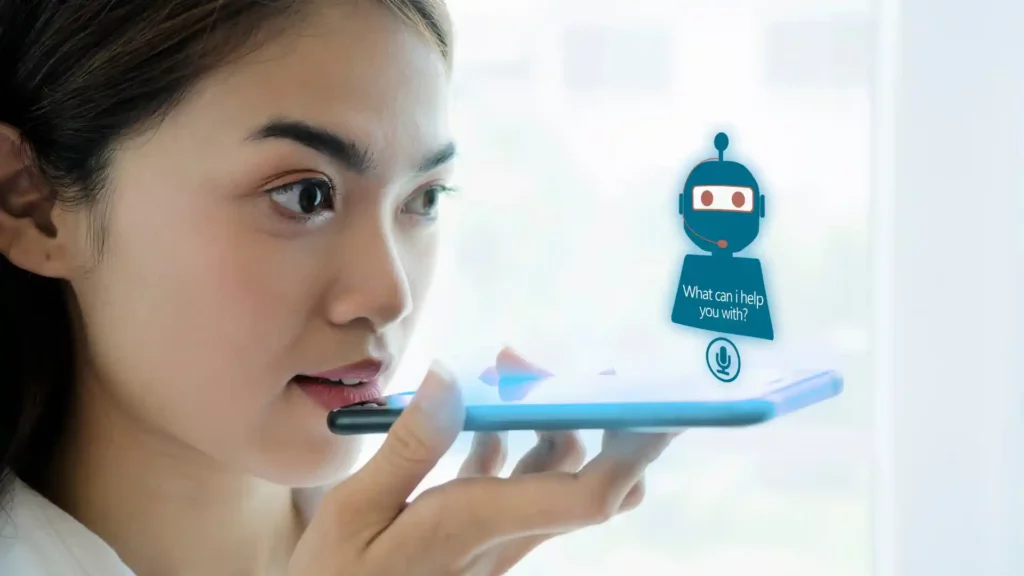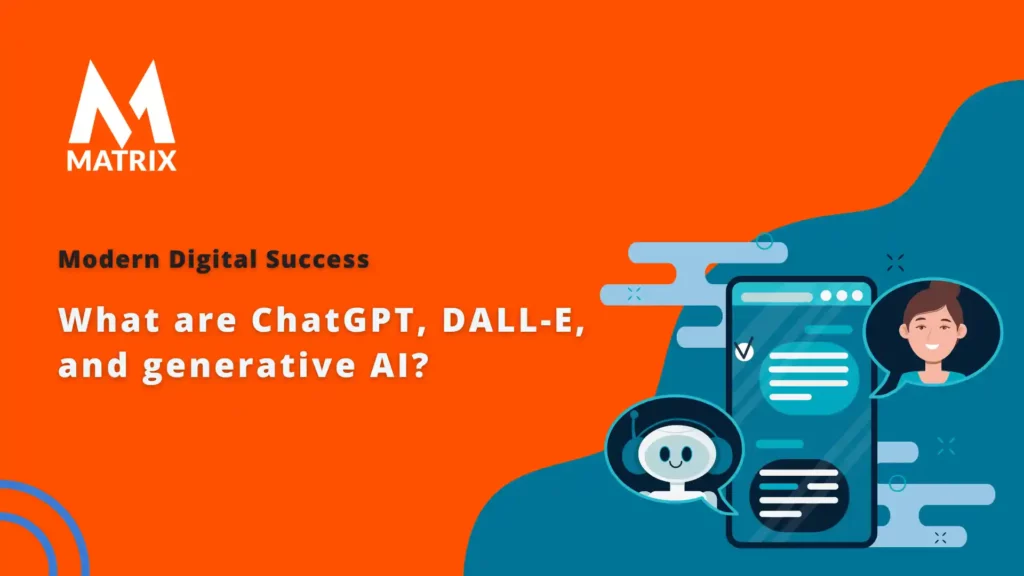What are ChatGPT, DALL-E, and generative AI?
What are ChatGPT, DALL-E, and generative AI?
As technology advances, so do artificial intelligence capabilities (AI). Generative AI is one such application that has gained attention recently due to its ability to create images and natural language processing models with high accuracy. Two of the most popular generative AI applications are ChatGPT and DALL-E, both developed by OpenAI.
This blog post will explore these two technologies, their differences, and their potential business uses. We will also look at how generative AI can improve customer service and provide more personalized experiences for users. What is a chatgpt API? How to use chatgpt.
So let’s dive into it!
Are you looking to stay up-to-date on the latest developments in AI?
Generative AI is one of the most advanced applications of artificial intelligence, allowing for the creation of images and natural language processing models with high accuracy. Two popular generative AI tools are ChatGPT and DALL-E from OpenAI.
Learn how these technologies can improve customer service, create more personalized experiences for users, and generate highly accurate images and text.
Read this blog post now to discover all about ChatGPT, DALL-E, and generative AI!
Stats from 2022 about generative AI

In 2022, generative AI applications became an essential part of operations for many businesses. It’s estimated that by the end of the year, over 75% of Fortune 500 companies will be using generative AI to improve customer service, create more personalized experiences for users, and generate images and text with high accuracy.
Generative AI has also increased customer retention and loyalty while reducing costs associated with manual labor.
Generative AI is a powerful technology that has shown itself to be incredibly effective in improving customer service, creating more personalized experiences for users, and generating images and text with high accuracy.
With the advancements of OpenAI’s Chat GPT and DALL-E technologies, businesses can use generative AI in their operations. The potential applications of this technology are vast, from increasing customer retention while reducing costs associated with manual labor to providing more tailored experiences for customers.
In 2022, it became an essential tool for many businesses worldwide, making it clear that generative AI will continue to be an important part of our lives.
If you want to stay up-to-date on the latest developments in AI, this blog post is for you! Learn all about ChatGPT, DALL-E, and generative AI now.
Generative AI is a powerful tool for businesses, but implementing it presents a unique set of challenges for Chief Marketing Officers and other key decision-makers. One of the major challenges is determining how to use generative AI applications to provide the best customer service and experiences possible.
For CMOs, understanding the capabilities and limitations of these technologies is critical for successfully integrating them into their businesses. Generative AI can generate highly accurate images, texts, and natural language processing models, but there are inherent risks associated with using generative AI in customer service roles.
Since generative AI models are highly complex and autonomous, they may not always accurately interpret customer feedback or respond in a way that meets expectations. Additionally, CMOs must consider the potential ethical issues that could arise from using AI models in customer service roles.
Another challenge faced by CMOs when implementing generative AI is choosing which technology to use. Chat GPT and DALL-E are popular options offered by OpenAI, but many other options are available today. Each technology has its strengths and weaknesses; Chat GPT is better suited for short conversations, whereas DALL-E focuses on image-generation tasks. Choosing one over another requires careful consideration of each option’s features and ability to meet business objectives.
CMOs must also consider cost factors when evaluating generative AI solutions, but we’ve been using it for years.
While some providers offer packages at lower rates than others, this does not necessarily mean that those solutions will offer better results or be more cost-effective in the long run. Instead, CMOs need to consider total costs — including upfront expenses and ongoing maintenance fees — before deciding which technology to invest in for their business needs.
Developing an effective strategy for incorporating generative AI into customer service operations requires careful thought from CMOs and other decision-makers who understand this technology’s potential rewards and risks. By considering these challenges carefully before investing in a solution, CMOs can ensure that they choose the best model for their business needs and deliver great customer experiences while minimizing unnecessary costs.
What is DALL-E?
DALL-E is an AI model developed by OpenAI that uses deep learning and natural language processing to generate images based on text descriptions. It combines the power of generative models with the control of natural language understanding, allowing users to create highly accurate images based on their specifications.
DALL-E aims to enable more powerful image generation systems, allowing for enhanced customization and the creation of high-quality visuals. It has many applications, including creating custom artwork or product designs from scratch.
What is ChatGPT?

Chat GPT is an AI-powered natural language processing (NLP) model developed by OpenAI that can generate a response in a conversational context. It uses deep learning to understand natural language, allowing it to respond accurately and intelligently to user input. Chat GPT can be used for customer service, product recommendations, data analysis, or any task requiring real-time human interaction.
Additionally, it can generate creative output like stories or jokes! By leveraging the power of generative AI technology and natural language understanding capabilities, Chat GPT offers powerful ways for businesses to improve customer engagement and provide more personalized services.
Major productivity gain in marketing with generative AI
Generative AI is a powerful tool for businesses in the marketing industry, providing major productivity gains and cost savings. By utilizing AI technologies such as ChatGPT and DALL-E, marketers can quickly generate images, texts, and natural language processing models with high accuracy and low costs. This allows marketers to improve customer retention while reducing labor costs associated with manual tasks such as customer service and data entry.
By leveraging generative AI, marketers can quickly and accurately create personalized customer experiences based on their past interactions and behavior.
For instance, if a customer previously purchased a product from the company’s website, the company can use generative AI tools to send them personalized offers that match their interests and purchase history. Additionally, marketers can use generative AI to automatically generate replies to customer inquiries or provide support in chatbot conversations.
Generative AI also helps marketers understand their customers through natural language processing (NLP).
NLP is artificial intelligence that enables computers to understand the written text to generate insights into customer behavior. With NLP, marketers can quickly analyze large amounts of customer data, including emails, chat messages, reviews, surveys, etc., allowing them to identify patterns that may have been undetected before. Marketers can then use these insights to make pricing strategies or product development decisions to maximize ROI while minimizing costs.
In addition to improving customer service and providing more personalized experiences for customers, generative AI also has the potential to change how content is created for marketing campaigns.
For example, generative AI tools such as GPT-3 allow marketers to quickly create optimized content tailored specifically for each user based on their preferences and past behavior.
This provides many advantages, such as increased engagement rates due to highly customized content that resonates better with users than generic campaigns. Furthermore, by relying on automation instead of manual labor for content creation tasks, brands can save time and money while still producing high-quality content at scale.
Overall, businesses in the marketing industry have much potential gain from leveraging generative AI technology into their operations due to its ability to reduce costs while increasing efficiency in both customer service roles and creating optimized content tailored specifically for each user’s preferences and past behavior.
By investing in this technology now rather than later when it becomes widely adopted by competitors, they will stand out amongst those who have yet to catch up with all of its benefits. As more research continues around this field, the applications of this technology will continue to open up new possibilities, but only those who take advantage now will benefit most greatly.
Problems for CEO in manufacturing about leveraging ChatGPT

Chat GPT is a recent development in generative AI that has the potential to revolutionize the manufacturing industry. CEOs of manufacturing companies are now faced with leveraging this technology while considering its potential risks.
The main issue is that Chat GPT is still an emerging technology, and it isn’t easy to anticipate how it will affect customer service, generate data, and be integrated into existing systems. CEOs need to understand what problems can arise when introducing ChatGPT, such as data privacy issues, customer satisfaction, technical challenges in integration, and increased costs.
Data privacy could be a major concern for manufacturing companies using Chat GPT because customer data needs to be collected before machine learning models can be trained.
Companies must ensure that they have policies to protect customer data from being disclosed or used for unintended purposes. Additionally, CEOs should consider if customers are comfortable with their data being used by third parties for training ChatGPT models and other AI-driven technologies.
Customer satisfaction may also be an issue when implementing Chat GPT within a company’s existing systems. If customers feel like their expectations are not met when interacting with a Chat GPT model, there could be a decrease in customer loyalty or trust in the company. CEOs need to consider if the experience offered by their automated system meets customer expectations or provides additional convenience through personalized services or recommendations.
Moreover, technical challenges might be involved when attempting to integrate ChatGPT into existing systems. This process typically requires custom coding, which increases costs and potential errors due to a lack of compatibility between different frameworks and platforms. Therefore, CEOS must consider such factors during integration and determine whether they have sufficient resources to implement it within their organization properly.
Finally, CEOs who want to leverage this technology for their businesses must also consider the cost associated with training. With AI becoming more prevalent across industries, many organizations compete for computational power, which can increase expenses significantly over time compared with traditional automation methods.
Therefore, having a clear understanding of both short-term and long-term costs associated with implementing generative AI solutions such as AI can help organizations save money in the long run by limiting unnecessary spending on resources or processes that won’t benefit them in any way.
Ultimately, CEOs need to carefully assess all pros and cons associated with leveraging generative AI technologies such as Chat GPT before making any major decisions about how they plan on deploying them within their respective organizations.
By considering these issues beforehand, they can minimize potential risks while taking advantage of all potential benefits of this technology to create more personalized experiences for their customers and provide better service overall.
What are the potential risks associated with using ChatGPT for manufacturing companies?
The potential risks associated with using Chat GPT for manufacturing companies are mainly related to data privacy, customer satisfaction, technical difficulties, and costs.
Data privacy is a major concern when deploying ChatGPT. Manufacturing companies must be sure that they have strict policies to protect customer data from being disclosed or used for unintended purposes. Additionally, customers must know how third-party services will use their data to train ChatGPT models and other AI-driven technologies.
Customer satisfaction is another risk factor when implementing Chat GPT within existing systems. If customers are not satisfied with the automated system’s performance, it could lead to decreased loyalty or trust in the company. Furthermore, CEOs should compare the experience offered by their automated system to customer expectations and determine if additional convenience can be provided through personalized services or recommendations.
Have you ever been in a chatbot loop? It’s like being on hold for 30 minutes.
Technical difficulties may also arise when integrating ChatGPT into existing systems due to incompatibility between different frameworks and platforms. Custom coding is usually required for this process, which can increase costs and lead to potential errors over time. There may also be high upfront costs associated with maintaining a thorough understanding of these technical issues before integration can begin.
Businesses must consider long-term costs associated with training and maintaining a the model and competing for computational power with other organizations leveraging generative AI solutions. Without proper budgeting and planning, organizations could be overspending on resources or processes that won’t benefit them.
Overall, manufacturing companies considering leveraging generative AI technologies such as ChatGPT should consider all potential risks before making major decisions about implementation within their organization.
They must clearly understand both short-term and long-term costs associated with this technology to minimize unnecessary expenses while taking advantage of all possible benefits it offers for creating more personalized experiences for customers and providing better service overall.
What technical challenges should CEOs consider when integrating ChatGPT into existing systems?
When integrating it into existing systems, CEOs should consider several technical challenges. One of the most important challenges is understanding the data architecture and associated resources needed to power Chat GPT models. CEOs will need to assess the scope of their project first and then create a plan for how they’ll train, deploy, and manage their model. This means they’ll need to understand all current tools, frameworks, architectures, and processes before integrating.
Another challenge is selecting the right training data sets. The data used to train platform must be highly quality and accurately represent its production tasks. If the data doesn’t reflect real-life scenarios or use cases accurately, it can cause errors within the system or even lead to unexpected behaviors. Additionally, training data must be constantly updated with new datasets as customer behaviors change or the company releases new features.
Thirdly, businesses should evaluate their current hardware capacity when running models at scale. Hardware resources will need to be optimized for performance and cost so businesses can maximize efficiency without spending too much on resources that won’t be used optimally. Furthermore, organizations will want to review and monitor their hardware utilization regularly and develop strategies for scaling up or down depending on peak usage times throughout any given day or month.
Finally, businesses must consider the operational costs associated with keeping ChatGPT models up-to-date and working properly throughout their lifecycle. This includes regular testing of accuracy and performance metrics so companies can ensure their model delivers desired results while also avoiding costly mistakes due to unexpected errors or failures due to outdated codebase versions or hardware components becoming obsolete over time.
They must also develop an efficient process for deploying software updates quickly while following industry best practices, such as ensuring backups are available in case something goes wrong during deployment phases so rollbacks can easily occur if needed.
Overall, CEOs should consider multiple technical aspects when integrating platforms into existing systems, including understanding data architecture needs; selecting high-quality training datasets; assessing hardware resources; and evaluating operational costs associated with maintaining model accuracy and performance over time.
By taking these steps beforehand, businesses can minimize risk while leveraging platform for better customer service experiences powered by AI technology solutions.
What costs are associated with training and maintaining a ChatGPT model?
The cost associated with training and maintaining a model depends on several factors, such as the data used to train the model, the size and complexity of the dataset, and the hardware resources allocated for running it at scale.
Firstly, businesses must consider their data requirements when training a ChatGPT model. High-quality datasets are necessary for accurate results, yet acquiring such data may be expensive, depending on its source.
For example, if a company requires large amounts of proprietary customer data from internal sources or must purchase third-party datasets from vendors, this could lead to considerable upfront costs. Businesses should also consider any additional costs associated with pre-processing and cleaning up data before using it in their models.
Second, companies must evaluate the size and complexity of their dataset when determining how many resources to allocate for running their models. Businesses should assess how much memory or computing power is needed to train their models depending on the complexity of tasks they expect them to perform.
For instance, if complex natural language processing functions are required, like text-to-speech recognition or image recognition capabilities, these can significantly increase resource utilization rates compared to simpler natural language understanding tasks. Companies can use cloud platforms to minimize costs while still optimizing performance but will need to weigh out all options available before making a decision that works best for them.
Thirdly, businesses must also consider any ongoing maintenance costs associated with keeping their Chat GPT models up-to-date as customer behaviors change or the company releases new features. This includes regularly updating datasets with new versions and re-training existing models once changes have been made to ensure accuracy is maintained throughout its lifecycle.
Companies may also need extra staff to aid in managing these updates, including additional software engineers or data scientists who specialize in AI/ML technologies and understand these processes more thoroughly than other employees within an organization.
What is generative AI?
Generative artificial intelligence (AI) describes algorithms (such as ChatGPT) that can create new content, including audio, code, images, text, simulations, and videos.
Recent breakthroughs in the field can potentially change how we approach content creation drastically.
How Generative artificial intelligence (AI) is being used in manufacturing firms
Generative artificial intelligence (AI) has quickly become one of the most promising technologies for driving efficiency and innovation in the manufacturing industry.
By leveraging AI-based tools, manufacturers can automate repetitive tasks and reduce manual labor, thus creating cost savings. It is also being used to generate 3D models of products with high precision and accuracy, allowing companies to quickly test out new designs without investing much in resources.
Conclusion
Manufacturing firms struggle to keep up with the ever-changing customer needs and remain competitive. Manual labor is costly, time-consuming, and inefficient when creating new products or services.
Imagine having a technology that can automate repetitive tasks, generate 3D models of products quickly and accurately, and create personalized customer experiences faster than ever before.
Generative artificial intelligence (AI) has revolutionized the manufacturing industry by providing powerful tools to help businesses save costs while delivering high-quality results efficiently. With AI tech like ChatGPT, companies have access to smarter solutions that enable them to stay ahead of their competitors in today’s market.
Don’t fire your copywriting yet.
How Matrix Marketing Group can help with ChatGPT, DALL-E, and generative AI?
Matrix Marketing Group is a leading provider of AI-based solutions, specializing in generative AI technologies such as ChatGPT, DALL-E, and generative AI. Our team of experts has the knowledge and experience to help organizations leverage these innovative tools to create high-quality content efficiently.
At Matrix Marketing Group, we aim to provide quality service and reliable results while helping organizations save time and money using generative AI technology. We are committed to delivering consistent value and exceeding expectations with our solutions.
Don’t fire your copywriting yet. Contact us today to learn how Matrix Marketing Group can help you harness the power of generative AI technologies and create more personalized experiences for your customers!
General FAQs
What is ChatGPT?
ChatGPT is a generative artificial intelligence (AI) technology that generates natural language through algorithms. OpenAI developed it, and its purpose is to make conversations sound more human-like. ChatGPT can be used for customer service, text generation, image captioning, and more.
What is DALL-E?
DALL-E is a generative AI technology developed by OpenAI that can generate images from natural language descriptions. It uses a transformer model to produce real-world images, such as those of animals and objects, using user-provided textual descriptions. Its ability to create high-quality visuals based on text input makes it highly valuable for businesses requiring creative marketing materials or product designs.
What is OpenAI?
OpenAI is an artificial intelligence research laboratory with a mission to democratize AI. It was founded in 2015 by Elon Musk and Sam Altman and is based in San Francisco, CA. OpenAI’s goal is to build safe artificial general intelligence (AGI) which can benefit humanity. The company works on projects such as robotics, natural language processing (NLP), machine learning models for applications such as robotic process automation (RPA), text generation, and creating virtual environments for reinforcement learning (RL).
What is generative AI?
Generative AI is artificial intelligence technology that uses algorithms to generate new content, such as audio, code, images, text, simulations, and videos. It relies on generative models which can texture-generate images from textual descriptions (like DALL-E) or generate natural language using user-provided input (such as ChatGPT).

